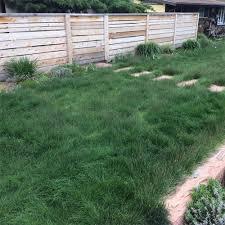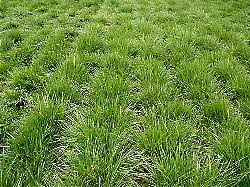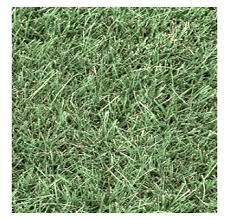Sheep Fescue Grass, scientifically known as Festuca ovina, is a type of grass that is commonly found in many places. It is known for its small size and ability to grow in various environments. This grass is often used in gardens, parks, and even in some pastures.
Sheep Fescue has thin leaves that are usually a bright green color. Its size is quite small, making it a great choice for places where larger grasses might not fit well. This grass is well-loved for its fine texture and neat appearance, adding a touch of beauty to landscapes.
One of the special things about Sheep Fescue is its adaptability. It can grow in different soil types, from sandy to clayey. It can also tolerate both sunny areas and partially shaded spots. This makes it a versatile option for areas with varying conditions.
Many people like to use Sheep Fescue in their gardens because it doesn’t need a lot of water once it’s established. This can be a helpful trait in areas where water conservation is important. It’s like a low-maintenance friend for your garden!
In some places, Sheep Fescue is used not only for its looks but also for its benefits to the environment. Since its roots can hold soil together, it helps prevent erosion. Erosion is when soil gets washed away by rain or wind, and that can cause problems for the land. Sheep Fescue acts like a little soil protector, keeping everything in place.
Another cool thing about Sheep Fescue is that it can sometimes be a part of habitats for different animals. Some birds might like to build their nests near it, and small animals might find shelter among its leaves.
Additionally, Sheep Fescue Grass, or Festuca ovina, is a small and lovely type of grass. It’s not picky about where it grows and can be a great addition to gardens, parks, and even places where the land needs a bit of help. Its adaptability, low water needs, and ability to prevent erosion make it a fantastic choice for various situations. So, if you’re looking for a simple and attractive grass, Sheep Fescue might be the one for you.
Read Also: Importance of Rabbit Urine and How to Use it
Growing and Care Guide of Sheep Fescue Grass

Here’s a simple growing and care guide for Sheep Fescue Grass:
Growing Sheep Fescue Grass
1. Choose the Right Location: Sheep Fescue can grow in both sunny and partially shaded areas. Select a spot that matches its sunlight preferences.
2. Prepare the Soil: This grass can tolerate various soil types, but well-draining soil is best. If the soil in your chosen area is compacted, you can loosen it up by adding organic matter like compost.
3. Sow the Seeds: You can either sow Sheep Fescue seeds directly into the soil or start them indoors and then transplant. Spread the seeds evenly over the soil surface.
4. Cover the Seeds: Lightly rake the soil to cover the seeds with a thin layer of soil. This helps protect them and encourages germination.
5. Watering: Keep the soil consistently moist until the grass seedlings establish themselves. After that, Sheep Fescue is quite drought-tolerant and doesn’t need a lot of water.
Caring for Sheep Fescue Grass
1. Watering: Once established, Sheep Fescue doesn’t require frequent watering. Water deeply but infrequently to encourage deep root growth.
2. Mowing: Sheep Fescue is a low-growing grass, so it doesn’t need to be mowed very often. If you want to maintain a neater appearance, you can mow it to a height of around 2 to 3 inches.
3. Fertilizing: This grass doesn’t have high nutritional requirements. You can feed it with a balanced, slow-release fertilizer in the spring if the growth seems slow or pale.
4. Weeding: Keep an eye out for weeds and remove them as needed. Regular weeding will help your Sheep Fescue thrive.
5. Disease and Pest Management: Sheep Fescue is relatively resistant to pests and diseases. However, keep an eye out for any signs of issues, and if needed, consult with a local gardening expert for advice on treatment.
6. Overseeding: Over time, Sheep Fescue might thin out. To keep your grass looking lush, consider overseeding every few years. This involves spreading new seeds over the existing grass.
7. Fall Care: In the fall, Sheep Fescue tends to grow more vigorously. You can apply a light fertilizer to support its growth during this time.
Remember, every location is unique, so it’s a good idea to observe your grass and adjust your care routine accordingly. With a little attention and care, your Sheep Fescue Grass can provide a lovely and low-maintenance addition to your outdoor space.
Chewings Fescue Grass

Chewings Fescue Grass, also known simply as Chewings Fescue, is a type of grass that many people find quite charming. This grass is known for its soft and fine appearance, making it a popular choice for lawns, gardens, and even some sports fields. Let’s explore more about this delightful grass.
Chewings Fescue has a scientific name: Festuca rubra commutata. That might sound a bit complicated, but it’s just a special name for this grass. It has narrow leaves that are soft to the touch, almost like a gentle brush. The color of the leaves can vary, ranging from a bright green to a more bluish shade.
One of the things that people like about Chewings Fescue is its size. It’s not a very tall grass, which gives it a neat and tidy appearance. This makes it perfect for areas where you want a well-kept look.
Chewings Fescue has some cool features that make it stand out:
1. Shade Tolerance: This grass can handle shady spots quite well. So, if you have a garden with trees or a place where the sun doesn’t shine too much, Chewings Fescue can be a great choice.
2. Fine Texture: Its soft leaves give it a fine texture that many people find pleasing. It’s like having a gentle carpet in your yard.
3. Low Maintenance: Chewings Fescue doesn’t demand a lot of attention. Once it’s established, it doesn’t need to be watered as often as some other types of grass.
4. Adaptable: It’s not too fussy about soil type, so it can grow in different kinds of soil. This can be helpful if you’re not sure what kind of soil you have.
Growing and Caring for Chewings Fescue
1. Choosing the Right Spot: Chewings Fescue prefers cooler climates and can handle some shade. Select an area where it can get a bit of sun but not scorching heat.
2. Preparing the Soil: Like many plants, good soil helps Chewings Fescue thrive. If your soil is heavy, you can add some sand to improve drainage.
3. Planting the Seeds: You can plant Chewings Fescue seeds in the spring or early fall. Sprinkle the seeds over the soil and gently press them down.
4. Watering: While the seeds are sprouting and the grass is young, keep the soil damp. As it grows, you can water less frequently.
5. Mowing: Chewings Fescue doesn’t grow tall, so you won’t need to mow it very often. If you do mow, just trim a little bit off the top to keep it looking nice.
6. Feeding: You can give your Chewings Fescue a bit of food once or twice a year. This helps it stay healthy and vibrant.
Chewings Fescue Grass is a soft, fine-textured grass that can bring a touch of elegance to your outdoor spaces. Its adaptability, shade tolerance, and low-maintenance nature make it a fantastic choice for lawns and gardens. So, if you’re looking for a gentle and charming grass for your yard, Chewings Fescue might be just what you need.
Read Also: Effect of Tropical Climate on Animal Parasites, Vectors and Diseases
Hard Fescue Grass

Hard Fescue Grass, known as “Hard Fescue,” is a special kind of grass that many people like to have in their yards. It’s a bit different from other grasses, and that’s what makes it interesting. Let’s learn more about this unique grass and why it might be a good choice for you!
Hard Fescue has a scientific name, Festuca trachyphylla. Don’t worry, you don’t have to remember that big name! What’s cool about this grass is its appearance. Its leaves are thin and narrow, and they have a fine texture that feels soft when you touch them. The color of the grass can range from a bright green to a more muted greenish-blue.
One special thing about Hard Fescue is its size. It’s not a tall grass at all. In fact, it’s quite short compared to other grasses. This makes it look neat and tidy, like a cozy blanket covering the ground.
People choose Hard Fescue for some interesting reasons:
1. Low Maintenance: Hard Fescue doesn’t ask for much. Once it’s settled in, it doesn’t need a lot of water or care.
2. Shade Lover: If your yard doesn’t get a lot of sunlight, that’s okay! Hard Fescue can handle shade quite well. It’s like a grass that understands the value of a little shade nap.
3. Drought Tough: This grass is like a superhero when it comes to droughts. It doesn’t mind if the weather gets dry because it’s used to tough situations.
4. Fine Beauty: Its fine leaves give it a delicate and charming look. It’s like having a gentle friend in your yard.
Growing and Caring for Hard Fescue
Here’s how to take care of Hard Fescue and help it grow happily:
1. Right Place: Choose a spot where it can get a bit of sun, but also some shade. It’s like finding a balance between sun and shade for your grassy friend.
2. Good Soil: If you have soil that’s not too heavy, Hard Fescue will feel at home. You can also add a bit of compost to make it even happier.
3. Planting Time: You can plant Hard Fescue seeds in the spring or fall. Sprinkle the seeds over the soil and cover them gently.
4. Watering: When the grass is young, it needs a little more water. As it grows, you can water less often. Hard Fescue knows how to handle dry times.
5. Mowing: This grass doesn’t grow tall, so you don’t need to mow it a lot. If you want, you can give it a little trim to keep it looking neat.
6. Feeding: You can give your Hard Fescue a tiny bit of food once or twice a year. This will help it stay strong and healthy.
Hard Fescue Grass, or Hard Fescue, is a special type of grass with a soft and fine texture. It’s great for places with a bit of shade and doesn’t ask for much care. Its ability to handle dry spells and its charming appearance make it a lovely choice for your outdoor space. So, if you’re looking for a unique and low-maintenance grass, Hard Fescue might be the one for you.
Read Also: Channels of Distribution and Types of Marketing Channels
